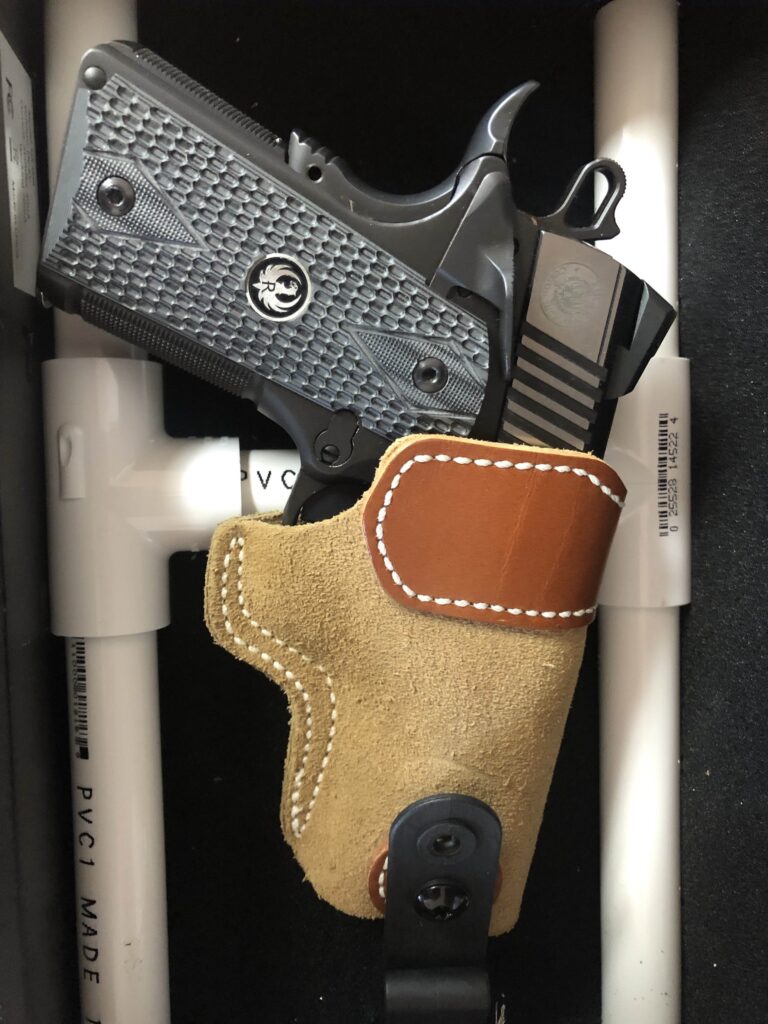I discuss safes a lot in my book. One type of safe homeowners use is a fast-access safe for firearms. These safes can be in several different configurations. Some open with a manual key, some have biometric (e.g., fingerprint) capability, some have keypads, and some have RFID. These safes allow faster access to a firearm but protect it from children, the elderly with mental challenges, housekeepers, and so forth. These safes do not protect very well against fire or burglary, so if you are going on vacation, you should move your firearm to your primary safe.
Unfortunately, many people with fast access safes are not implementing some fundamental safety measures. I’ll go through some important ones here:
- Ask yourself where the bullet will go if you opened the safe, grabbed your firearm, and had a negligent discharge. Depending on your firearm’s power, it could blow right through the safe and continue going. Also, a negligent discharge could happen as it is being lifted out of the safe, and the bullet will not have to go through it. In short, your firearm and safe should be oriented to a location that can stop the bullet. Too often, firearms and safes are oriented to interior walls, and a negligent discharge could have dire implications for your family on the other side of that wall.
- Many people lay their firearms on the bottom of the safe with no holster. This configuration significantly increases the chance of a negligent discharge. You should store your firearm in a holster that does not have retaining straps and protects the trigger and controls (these are often called pocket holsters or tuck holsters). In addition, you’ll want to secure the holster so that it says in the safe and does not come out with the firearm. A holster lets you find the firearm in the dark and properly grip it.
- I would recommend a deeper fast access safe that allows you to tilt the firearm’s grip up slightly so you can grasp it easier (and safer).
- Recognize that children are curious and innovative. For example, they can unlock your phone with your finger if you are taking a nap or still sleeping in the morning. If they can do that, they can also open your fast access safe if you are crashed out right next to it.
Here are some other recommendations:
- If the firearm stored in the safe doubles as your concealed carry firearm, store it in the same condition as you carry it. For example, if you carry a 1911 in condition 3 (and trained that way) but store it in Condition 1 because you believe speed is critical, you will likely try to rack the slide in a stressful situation, and the engagement of the manual safety will prevent it. Store your firearm in the fast access safe in the same manner you carry it.
- Using a deep safe with a tilted holster may allow you to store other critical items in the safe without interfering with firearm access. For instance, you may be able to store an alarm system panic button and a small flashlight (if your weapon doesn’t have a light). I would avoid having anything in the safe that requires charging, such as a 911 pendant. Keep that easily seen and on the charging station.
- On the inside lid of your safe, put your name, address, and phone number. If you are in a defensive position in your bedroom and talking to the 911 operator, you are in a stressful situation. Too often, in these situations, we can have a brain block on simple things, like your home address.
- I recommend a fast access safe that can be opened with a biometric fingerprint, large keypad, or physical key. A safe with RFID, large keypad, or a physical key is even better. I am not a big fan of fingerprint-only access. In stressful situations, your finger may be moving or, worse, bloody (or missing). If you choose to go with fingerprint access, make sure the safe can store all your fingerprints on both hands.
- If you use a keypad, ensure your code uses all the numbers. Over time, wear on the keypad can show what numbers are in your code. This hint will significantly increase the chances of someone guessing your code.
Here is a picture of one of my firearms in a fast access safe. Basically, I have a $25 tuck holster wired to the side, so the holster stays put. Then, I added about $5 in 1/2″ PVC pipe to it. This pipe allow the holster to be tilted so it can be grasped easier. I couple of caveats on the picture – the pistol’s hammer is at quarter-cock, which is not on purpose, so don’t worry about it. I was too lazy to retake the picture. You’ll also see that there is a hole in the grip safety. What that is for will be discussed in another post.
